‘Every Step of the Way’
A history major who presented her research at a national conference, Elizabeth Redmond '25 finds a balance of challenge and support at Kenyon.
As college admissions adapts to an ever-shifting and increasingly competitive landscape, we break down what has changed — and what has stayed the same — about applying to Kenyon.
Story by Megan Monaghan | Photography by Nancy Andrews
“My job is not to sell Kenyon. It’s to tell Kenyon.” Elizabeth Redmond ’25 is wrapping up her campus tour for a high school student and his parents, who drove from Cleveland to Gambier on a warm November afternoon. It’s a line she has used before, not just because it’s catchy, but because she likes to stress to families that she is here to speak truthfully about all things Kenyon. She looks directly at the 11th-grader: “So, ask me anything. Seriously. I’m an open book.”
In that moment, you get the impression that Redmond, a history major from Indianapolis, really would tell you anything you wanted to know — offering up the kind of candid accounts that aren’t easily found by scrolling Kenyon’s Instagram feed. Her guest, who so far has expressed interest in chemistry and baseball, opts to ask about the club scene. It’s a standard question that elicits the customary response (Kenyon offers 100 clubs, and the option to start your own), but if anything else comes to mind, he can email Redmond at the address on the card she hands him as they part ways. He is off to a tour of the English quad, and she is off to her independent study on modern Anglican literature.
Alumni joining a campus tour today may note that much of the experience remains unchanged. Families are guided toward Old Kenyon, where they pause at the Celtic cross to tell the story of the College’s founding. (Redmond nailed the delivery of Philander Chase’s “this will do,” earning the desired chuckles.) The literary scenes etched in Peirce’s stained glass windows are described alongside the extensive dining options. The seal is sidestepped with caution, and tour groups stay to one side of the post when walking through the gates to Middle Path. (Rituals based on superstition always seem to stick.)
The most prominent change to the campus tour is where it begins: in the newly constructed Lowell House, situated on the north side of the West Quad, which was completed in 2023. The modern, four-story brick building is an architectural contrast to Ransom Hall, the early-20th-century Gothic landmark that welcomed visitors to Gambier for 60 years. Yet both are named after renowned Kenyon writers: John Crowe Ransom founded the Kenyon Review and Robert Lowell ’40, who twice won the Pulitzer Prize in Poetry, was one of his students.
Moving across Middle Path to Kenyon’s newest academic quad certainly has its perks, including an underground parking garage and panoramic views of Chalmers Library and Oden Hall. Yet the transition also was a practical one, as it brought together the offices of admissions and financial aid — two functions that work hand-in-hand — under one copper-paneled roof. (The latter had been housed across the street from Ransom, in Edelstein, for a decade.) The result is a more seamless experience for prospective students and their families, who are heavily weighing costs when searching for colleges, and with good reason. Considering that tuition is rising at a faster rate than household income, the sticker prices of private institutions, Kenyon included, can be startling.
Adding to the list of questions on discerning high schoolers’ minds are the usual suspects regarding student life, choice of major and career-building opportunities. These topics pop up regularly on campus tours and at college fairs, and admissions directors have responses and resources at the ready.
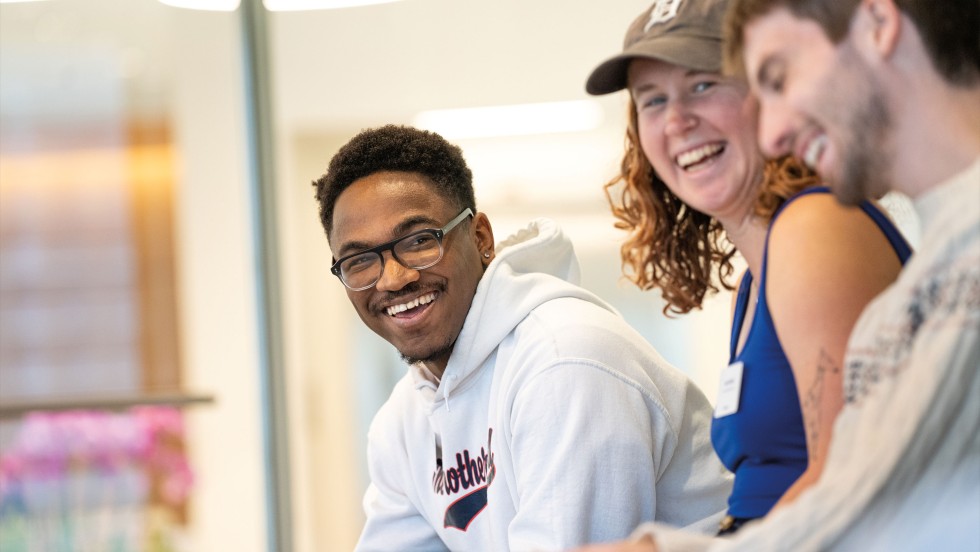
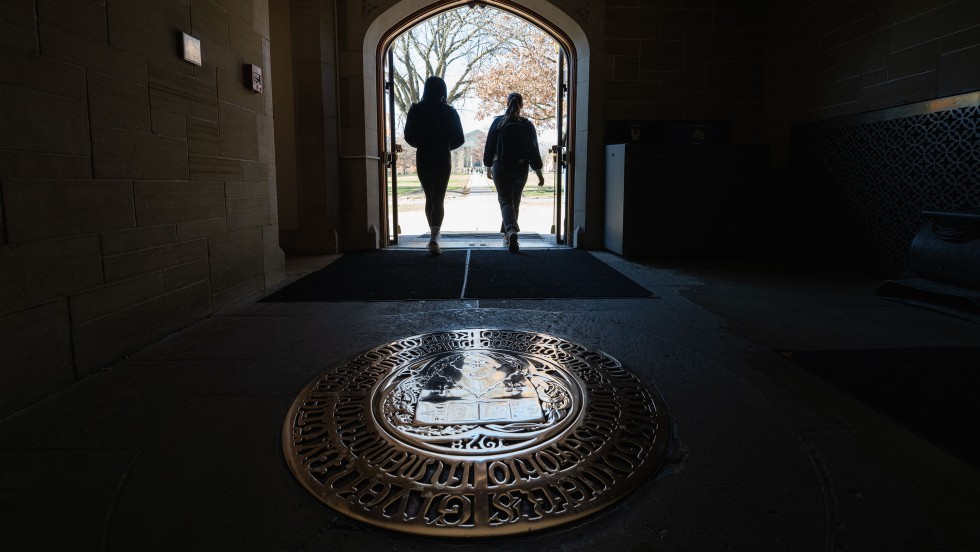

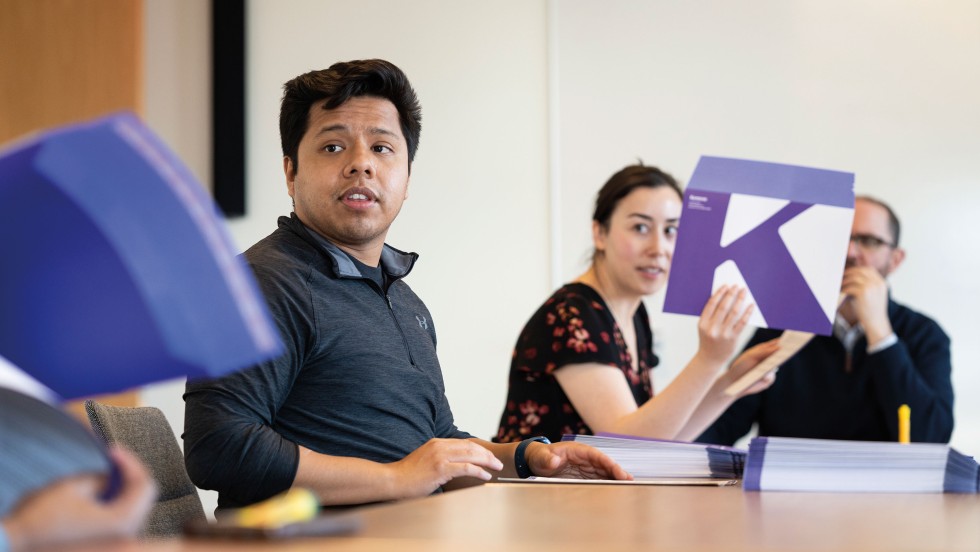
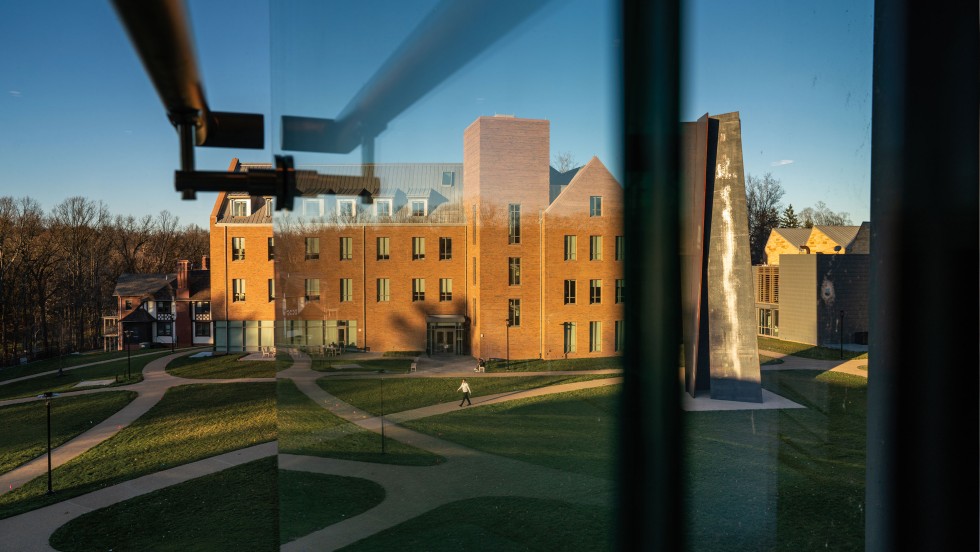
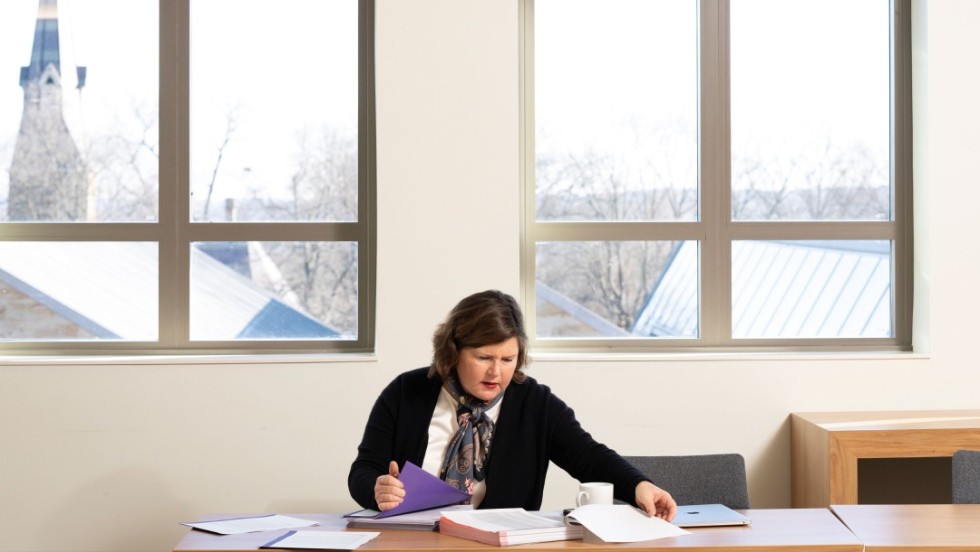
What’s less certain is the enrollment landscape surrounding Kenyon, which continues to adapt to shifting demographics, economic instability and a landmark Supreme Court ruling on race that upended the higher education industry this past summer. “We are in an ecosystem,” said Diane Anci, vice president for enrollment and dean of admissions and financial aid. And when that ecosystem is disrupted, students — and the institutions they apply to — make different decisions, shaking up enrollment patterns and causing unpredictability throughout the sector.
Despite this volatility, the demand for a Kenyon education remains high, with recent years of record applications from students who continue to raise the College’s academic profile. (The average weighted GPA of the first-year class was a 4.14.) The uptick in interest also may point to growing uncertainty among high-achieving students, who are applying to more schools — the proportion pursuing more than 10 has doubled in the last decade — to expand their options come decision day. When it’s time to admit those students, Kenyon competes with the most selective colleges in the country as well as those offering deep discounts, creating “significant pressure,” said Anci. “There never has been a time with more external forces at play.”
A 35-year enrollment veteran, Anci leads a team of professionals who navigate this complex work with great care, making decisions that are informed by data and always in service to students and their families. We asked Anci to shed light on the biggest headlines in college admissions and to expound on Kenyon’s approach to building a class.
Understanding the news on testing, tuition, and how admissions decisions are made, and what it all means for Kenyon.
Higher education, like most industries, is still dealing with the fallout of the pandemic. For enrollment, a system that relies on predictive models to attract, enroll and retain students, the impact has been seismic. Since 2020, most colleges and universities have not met their targets, some soaring well beyond goals with others falling far below. Institutions coming up short have pivoted to heavier-than-usual discounting, offering pricing so low that it has increased competition among colleges. The transition to virtual learning for high school students took a toll on college preparation, causing retention rates to bounce around. And when standardized testing centers closed during the pandemic, 2,000 colleges and universities, Kenyon included, waived long-held requirements that applicants submit SAT and ACT scores. “Test-optional was a significant event in and of itself,” explained Diane Anci, vice president for enrollment and dean of admissions and financial aid, who said that Kenyon continues to evaluate its policy on a yearly basis, with the expectation of making it permanent.
As college costs continue to rise in an unsettled economy, more families are reaching out to financial aid offices for support. During the pandemic, the federal government provided institutions with additional grant funding in the form of Higher Education Emergency Relief Funds. As families continue to recover, colleges are boosting their scholarship dollars, putting unprecedented pressure on financial aid budgets — which are limited at institutions like Kenyon that depend largely on tuition revenue. Kenyon also remains committed to accessibility by meeting 100% of a student’s demonstrated financial need. (Only about 5% of colleges and universities do this.) All of this makes giving to the endowment and annual funds that much more vital. Alumni and donors gave $100 million to support scholarships and financial aid during the Our Path Forward to the Bicentennial campaign.
Families applying for federal aid are filling out a more streamlined form since the implementation of the FAFSA Simplification Act in December. The Free Application for Federal Student Aid — filed by 18 million students each year — now includes a direct data exchange with the IRS, resulting in fewer fields to complete. The form also no longer considers the number of siblings concurrently enrolled in college, but it does have provisions that are designed to increase Pell grant eligibility for low-income families. These changes — the first major ones since 1992 — have resulted in multiple delays for the release of federal financial aid data that colleges and universities rely on to make financial aid offers. This has forced institutions to make significant adjustments to their planning and messaging throughout the decision season.
In June, the Supreme Court ruled that race-based affirmative action programs violate Title VI of the Civil Rights Act of 1964 and the Equal Protection Clause of the Fourteenth Amendment. While colleges and universities were well-prepared for the ruling, it required a shift in the policy and practice of admissions selections. Kenyon is fully complying with the ruling while remaining committed to enrolling a student body with diverse talents, viewpoints and lived experiences. “The ruling does not force colleges and universities to alter their mission or their recruitment efforts,” said Anci. She added that Kenyon always has practiced a holistic review of applicants: “We don’t admit students for one reason, just as students don’t choose Kenyon for one reason.”
The college search is often cluttered with guidebooks, news stories and unsolicited advice about where to attend and how to get in. Diane Anci, Kenyon’s dean of admissions and financial aid, is here to clarify an often overwhelming process.
My colleagues and I very much view our work as being in service to prospective students and their families, and to great institutions, like Kenyon, that are making a difference in the world. And while we aim to always be articulate, informed and enthusiastic about the institution that we serve, we want to make sure it’s not about us. It’s about helping students find the answers that they need — whether it’s about their prospective major or what they value.
When we say that this is a place that’s going to take you seriously, that’s going to challenge you, that’s going to support you, we want you to walk away from every interaction you have with us feeling some or all of those things. When I did my own campus visits in December of 1983, I don’t remember the answers to the questions I asked, but I absolutely remember how I felt.
We start by really listening to them. Everyone who works here values asking good questions and listening to the answers, because we care about what students have to say. We’re eager to hear how they are and where they are in their college search. What are their observations and reactions as they make their way to different campuses and log on to college websites? The admissions process can be overwhelming for students and families — we aim to keep the focus on them and their interests.
We find that what’s best for students is to connect them with Kenyon students, so that they can hear directly and authentically from them about their own experiences. We have 84 students who support our efforts in the Office of Admissions, so we put them in touch with one another based on shared interests. Our student guides and fellows care about Kenyon and our prospective students. They are well-trained on the important facts and figures about Kenyon, but also on how important it is to genuinely listen to other students and create space for them.
We bring a good deal of transparency to what we do, and we entrust them with a lot of information. As Kenyon students, they’re smart, interested and engaged. It’s a powerful thing to watch people sit up straight when they’re trusted. And part of the trust includes the freedom to connect meaning-fully with prospective students and share details of their Kenyon experience that matter most to them. They are not following a script.
While we do not have a formula, the transcript is absolutely the most important part of the application, since it is a reflection of a student’s four years in high school. It’s not just a quick scan of the final GPA and class rank, but a look at a student’s progression.
We learn as much as we can about the schools within the territories we represent. That background informs our read of every single application. Admissions is the art of context: community, school and family.
Our approach to decision-making aims to honor merit, in terms of academic ability, the ability to think and write well, and co-curricular involvement and talent. This is a place that values academic excellence first and foremost, so that is what drives our decisions.
We can’t fix the overwhelming nature of the admissions process, but we can try to be a little bit of an oasis. For instance, we would never give advice that suggests the admissions process can be manipulated. It frustrates me when I hear someone advise students to avoid writing about certain subjects in their essays. It’s important that students write about what they know. This is not a moment to pick a topic that they think will dazzle admissions committees and then be hunting and pecking for their words.
I do think students receive the message that the admissions process is a game, and that they have to play it by putting on a strategic suit. The truth is that we are trying to teach students how to make big life decisions, and this is a big life decision. You have to be articulate and clear about your own interests and values. You have to be able to reflect on your past so that you can think thoughtfully and well about your future.
We all say that you don’t start the admissions process by buying the 15-pound book of 3,000 colleges in the United States. There has to be an internal process that happens first. You need to be able to describe the environments in which you are happy and do your best work. Do you like the idea of being the smartest student in your class or being surrounded by really smart kids? Is it important to find a specific course of study or to have a wide range of options? Do you like the idea of meeting five new people a day or finding five people who will be your friends for life? Are you drawn to familiar people and places or are you excited by a new region, meeting students from across the nation and around the world? Do you prefer to work in a highly collaborative environment or are you energized by competition? Knowing the answers to these questions provides a protective armor in the admissions process. Being able to say, “I’m the kind of person who … ” is empowering.
A history major who presented her research at a national conference, Elizabeth Redmond '25 finds a balance of challenge and support at Kenyon.
Explore Kenyon's campus, learn more about the application process and meet the dedicated staff in the Admissions Office.
Kenyon’s swimming and diving program is having a ripple effect far beyond Gambier through the swimmers who have…
Read The StoryCraftsmanship and entrepreneurial acumen collide in the buzzworthy food prints of Anastasia Inciardi ’19.
Read The Story